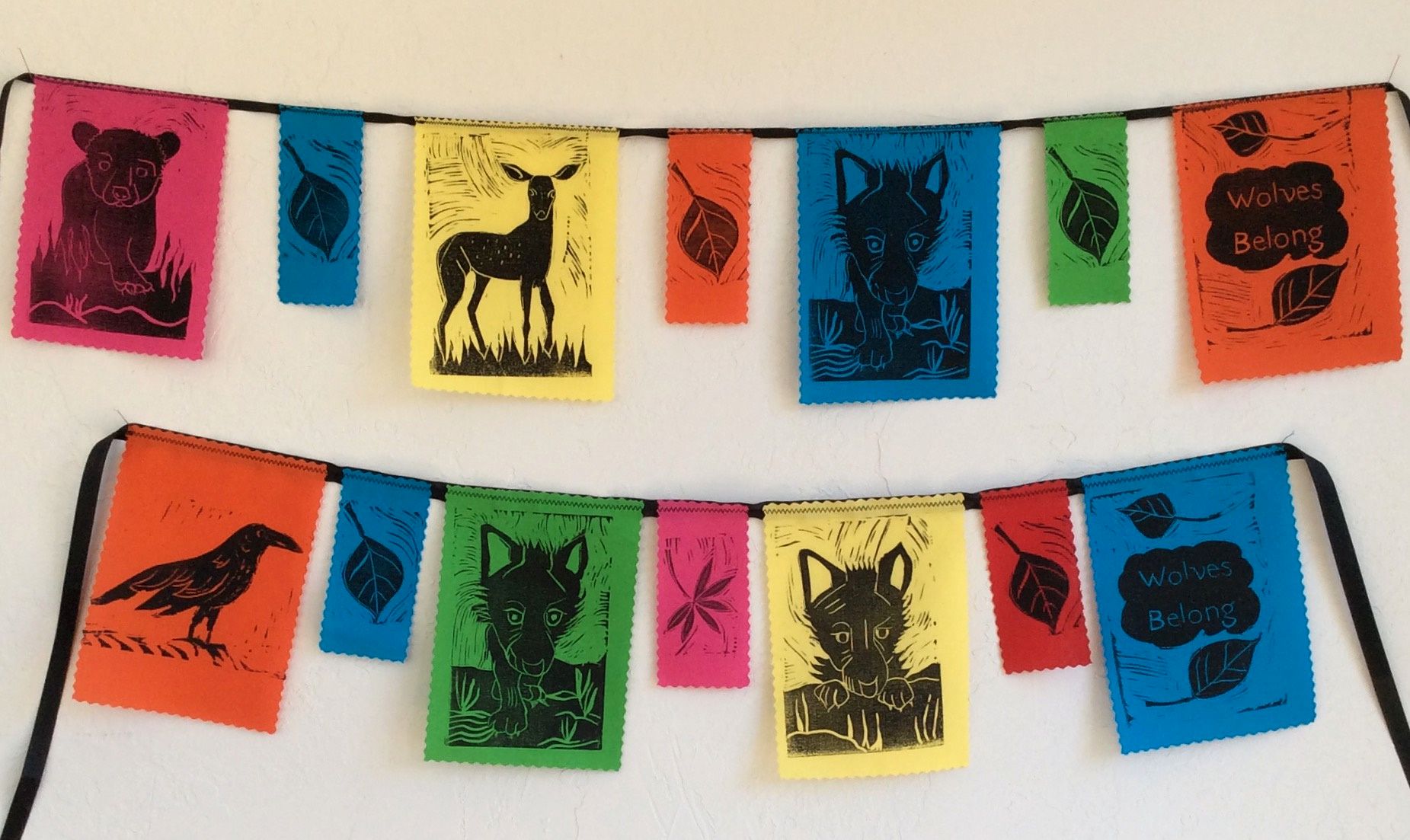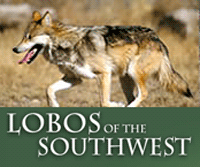AZ Daily Sun (original) Posted: Monday, June 16, 2008 10:00 pm
ALBUQUERQUE, N.M. (AP) — A program to release Mexican gray wolves in southwestern New Mexico and southeastern Arizona has more support in Arizona than in New Mexico, according to a poll commissioned by wildlife groups and environmentalists.
However, the endangered wolf has broad-based support among voters in both states, said Brian Sanderoff, president of Research & Polling, which conducted the survey in April and May.
The 19-question poll, released Monday, showed 77 percent of Arizonans and 69 percent of New Mexicans support or strongly support reintroducing wolves on public lands in their states, while 21 percent of New Mexicans and 13 percent of Arizonans oppose the program.
Dave Parsons, former coordinator of the program for the U.S. Fish and Wildlife Service, believes the high support "represents a societal change over time, where people more and more identify with and value nature and wild animals."
There were 52 Mexican gray wolves in the wild in January, the last count by Fish and Wildlife, which began releasing wolves along the New Mexico-Arizona border 10 years ago. The goal is to re-establish the species in part of the historic range where it was hunted to the brink of extinction in the early 1900s.
The 2007 count was seven fewer wolves than the year before. Wildlife biologists had hoped to have 100 wolves in the wild by 2006.
Parsons said strong support for the program and for managing wolf-cattle conflicts without killing wolves shows that the program needs "to find new direction that works for everybody and works for the wolves."
While people who live in wolf release areas should be listened to, program managers "should not lose sight of the fact that these are public lands that belong to the people of New Mexico and Arizona," Parsons said.
The random scientific survey — commissioned by such groups as the Arizona Zoological Society, New Mexico Audubon Council, the Southwest Environmental Center and Parson's organization, the Rewilding Institute — was conducted in Arizona between April 25 and May 4 and in New Mexico between April 24 and May 11. The Albuquerque-based market research and public opinion research company questioned 1,000 registered voters, half in each state, by telephone. The poll has a margin of error of plus or minus 4.4 percentage points.
Sanderoff said the sample size wasn't a large enough in areas where wolves have been released to say if opinions there differed from those in general.
Wolves in New Mexico are concentrated in Catron and Grant counties. Catron County Manager Bill Aymar, who opposes the program, was out of his office Monday and could not be reached for comment.
Catron County last year passed an ordinance claiming the right to remove problem wolves if the federal government didn't act. Grant County asked the state and federal governments to pay for livestock and pets killed by wolves and compensate the county for lost hunting opportunities and emotional damage.
One poll question asked voters to choose between two statements — one viewing the wolf as beneficial, the other as harmful.
In New Mexico, 64 percent chose the statement that "the wolf is a benefit to the West and helps maintain a balance of nature." Twenty-one percent agreed the wolf "kills too many elk, deer and livestock and does more harm than good."
In Arizona, 76 percent of the respondents chose the positive statement; 13 percent the negative one.
Sanderoff said the question "gets to crux of debate" and the result is "pretty good in terms of the support and recognition of the role the wolf plays here in New Mexico."
However, 39 percent of New Mexicans oppose giving the wolf recovery program priority over livestock grazing on public lands; 34 percent support that idea. More Arizonans favor giving wolves priority — 43 percent vs. 27 percent opposed.
Thirty-one percent of New Mexicans said they knew a lot about the program, compared to 25 percent of Arizonans. Forty-eight percent of voters in both states said they knew a little, while 20 percent of New Mexicans and 26 percent of Arizonans said they knew nothing at all about it.
Sanderoff said those who knew most about the program "were more likely to have stronger feelings in support or stronger feelings in opposition."
Seventy-three percent of Arizonans and 62 percent of New Mexicans believe Fish and Wildlife should ensure the species does not risk extinction. On the other hand, 23 of New Mexicans and 14 percent of Arizonans said the agency should do everything it takes to prevent wolves preying on livestock, including trapping or shooting them.
The survey showed other support for rancher concerns.
Seventy-nine percent of Arizonans and 72 percent of New Mexicans believe taxpayer money should be used to help ranchers prevent or reduce conflicts with wolves. Eighteen percent of New Mexicans and 11 percent of Arizonans favor using taxpayer dollars to remove or kill wolves that come into conflict with livestock.
Thirty-three percent of New Mexicans support killing or trapping wolves that kill three or more head of livestock in a single year, a current requirement of wolf reintroduction. Thirty-six percent of New Mexicans oppose that.
In Arizona, 28 percent favor killing or trapping wolves that prey on three or more head of livestock in a year; 44 percent oppose it.
Critics contend the policy favors ranching interests and prevents a thriving wolf population. Ranchers say it targets wolves that habitually kill cattle.
State and federal officials have proposed not penalizing wolves for killing livestock if investigators conclude "intentional attraction or repeated knowing attraction of wolves contributed or likely contributed" to the kill.
Environmental groups have sued to overturn the three strikes rule instead.
Sanderoff said the poll found few variations among subgroups. In New Mexico, for example, registered Republicans were less likely to support the wolf program, but 65 percent of Republicans still supported it compared to 28 opposed, he said.
There also was less support in eastern New Mexico, which is more rural and agricultural, but a plurality still supported wolves, he said.





